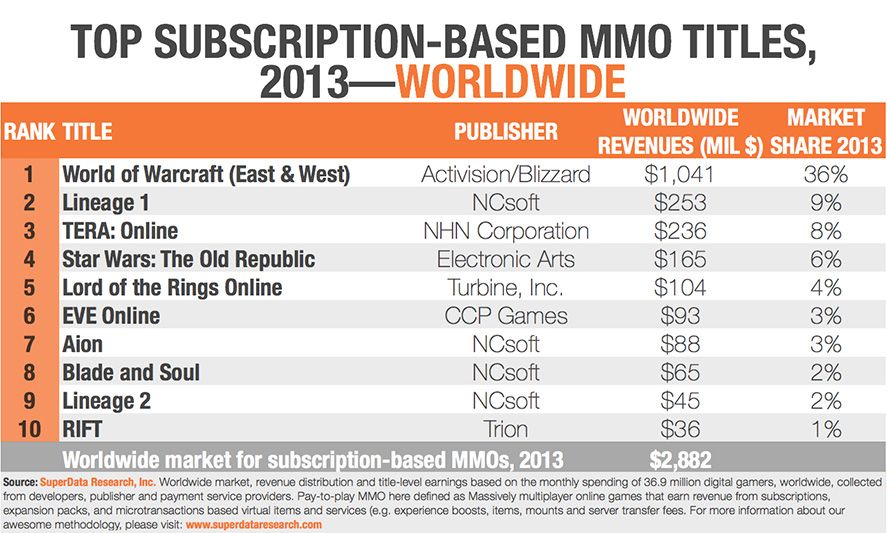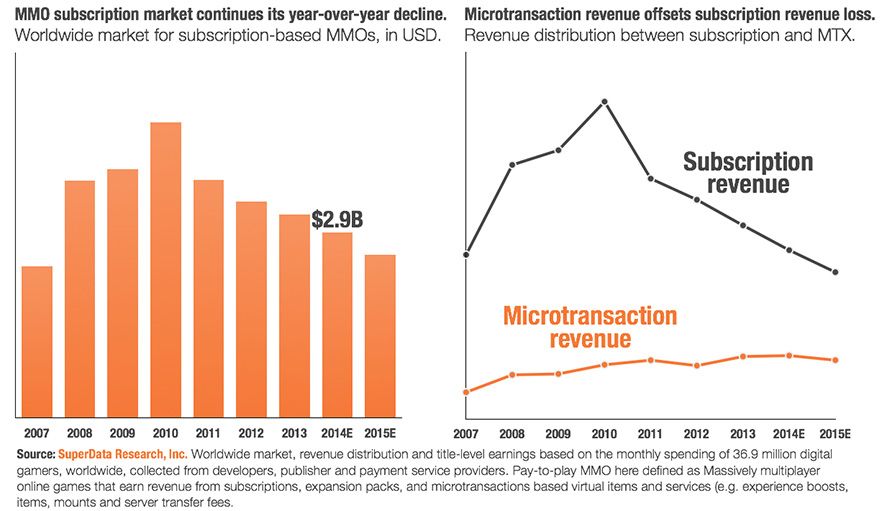The year 2014 is now in full swing, but it seems like time has stood still for certain sectors of the gaming world. SuperData Research, Inc. has developed a ranking with the MMO games that generated the highest revenues during 2013, and has also reaffirmed the declining trend with regard to the number of users who opt for the monthly subscription model.
Although new titles have appeared every year that attempt to unseat World of Warcraft, what’s certain is that the game from Blizzard continues to pull in the largest market share, currently holding 36% and more than a billion dollars a year in revenues at the international level, surprisingly followed by the first installment of the Lineage saga, born in no later than 1998 and with a player base that is practically entirely Korean.
The rest of the list includes a few other games with a few years behind them, such as Lord of the Rings Online (2007), EVE Online (2009), and Lineage 2 (2003). That said, of the ten titles, only two of them have retained a business model based exclusively on monthly subscriptions. All the rest have succumbed to the freemium model that we were just talking about recently, offering a free gaming experience that’s completed with micro-payments via their corresponding virtual stores.

It’s precisely that dilemma that has been progressively modifying consumption habits and reducing the global annual revenues total since the year 2010, in which, for a start, World of Warcraft had 12 million active users, while during the first quarter of 2014 that number is estimated at less than 8 million. The global trend is constant, decreasing more than 10% each year. In turn, and as is to be expected, the microtransactions model has been on a timid increase, although it doesn’t appear to be catching on well amongst traditional players of this type of game, unlike the mobile market, where it’s become the main source of income on Android.

The change in model has rescued many games like The Old Republic, Aion, and TERA, which had to tweak the games’ progression systems on the fly to adapt them to the freemium model. Like it or not, in the end net revenues call the shots and thanks to them many projects have stayed afloat.






